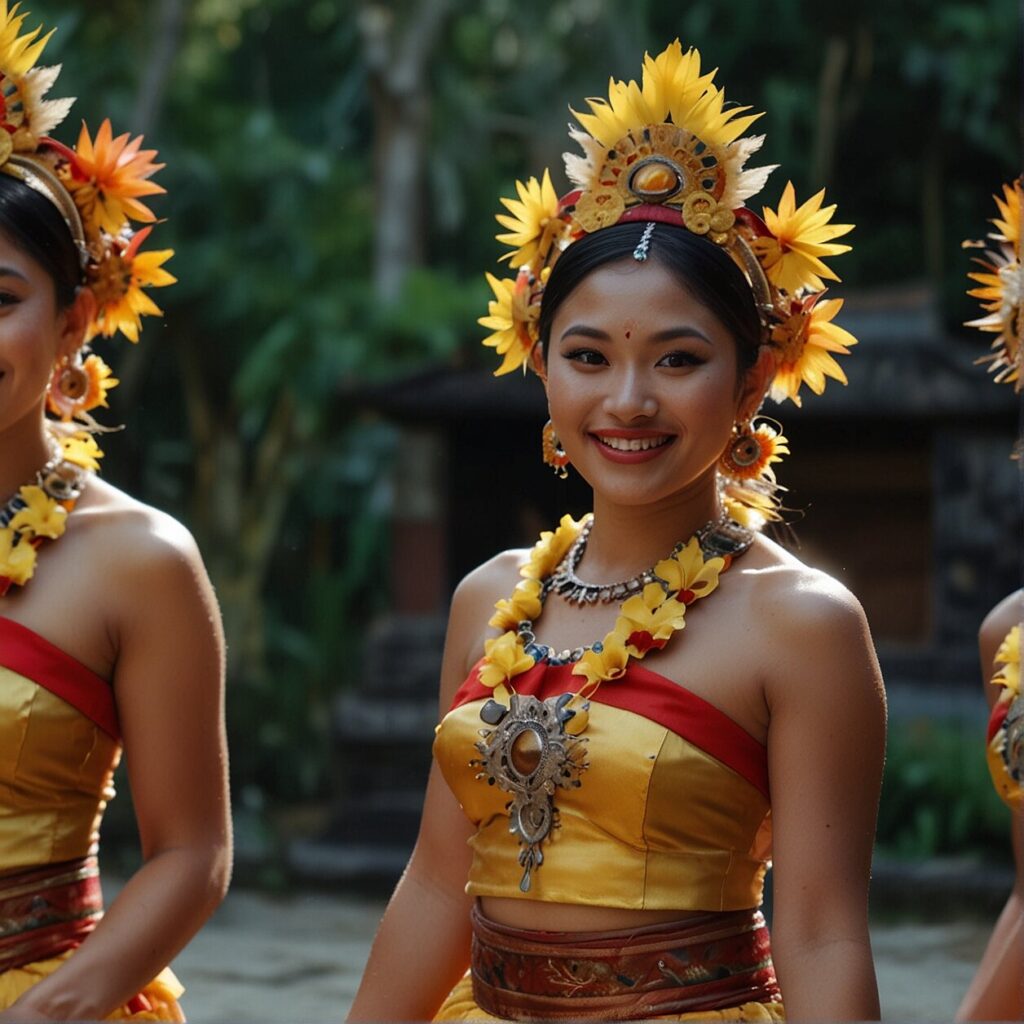Documenting Culture: Ethical Consideration in Travel Photography
The ability to capture moments on our travels, to encapsulate experiences and share stories through a single frame, is nothing short of magic. Yet, as travel photographers, we occupy a position of great responsibility. We navigate the delicate balance between capturing compelling images and respecting the privacy, values, and cultures of the people and places we visit. This article aims to guide you on your journey, elucidating the importance of ethics in travel photography and outlining how to engage with people and cultures respectfully during your travels.
“Photography is the story I fail to put into words.” – Destin Sparks
As you explore this article, you’ll find insightful sections discussing the intricacies of nurturing respectful interactions with locals, providing you with crucial photography etiquette in different countries, the importance of research in ethical travel photography, among others.
We believe that understanding these elements will not only enhance the quality of your photographs but also deepen your travel experiences, forming connections and spreading understanding across cultural boundaries. Embark on this enlightening journey with us—we hope to inspire more responsible, respectful and ethical travel photography.
Understanding the Ethics of Travel Photography
Let’s rip off the bandage first. Travel photography can indeed be a sensitive subject. You’re stepping into a different world, steeped in its distinct customs, values, and traditions. Unlike the animals found in wildlife photography or magnificent landscapes, people and their cultures require a certain level of respect and decency when being photographed.
The ethics of travel photography refers to the moral principles that govern the behavior and actions of photographers when capturing images during their travels, particularly images involving people and their cultures. It is a set of guidelines formulated not to restrict or limit your creative freedom but to ensure that cultures and people are represented accurately, respectfully, and thoughtfully.
Let it sink in. You’re interacting with real people, with real feelings and real lives. The ultimate goal here is to capture their essence and stories without being exploitative or diminishing their worth. Right? May sound a bit heavy, but remember, with the power of the lens, comes great responsibility. At the end of the day, what you want to avoid is ‘othering’ the people you photograph, or in simple terms, representing them as exotic, backwards, or inherently different.
So, how do you balance capturing your unique travel experiences while ensuring you are respectful and ethical? That is the million-dollar question, dear reader. It boils down to approaching your subjects with kindness, engaging thoughtfully, and developing a better understanding of a place’s culture and history. It’s a journey of education and respect! Exciting, isn’t it? Let’s delve more into this.

Nurturing Respectful Interactions with Locals
Engagement is key in nurturing respectful interactions with locals. Genuine interest in their lives, cultures, customs, and traditions is a surefire way to garner their respect and appreciation. It’s not just about clicking their pictures. It’s about turning that process into a shared experience that they, too, can enjoy and take away something from.
Start with a smile, one of the most universal of human connections. Approach people with warmth, humility, and readiness to learn and understand. It is important to appreciate their willingness to get involved in your travel keepsake. Remember, you are not only taking a picture of them; you are, in a way, documenting their culture and depicting their lifestyle.
Remember to stay sensitive to the surroundings. Every terrain is different and so are the people. Gauge the environment, observe if people seem comfortable around cameras, or if they shy away. Be mindful of your equipment, your attire, your demeanor, everything that contributes to making people feel at ease.
Respect the local norms and customs, ensure that your actions or your camera do not intrude on sacred rituals or private spaces. If you’re unsure, always ask. Communicate your intentions clearly and ask for consent to photograph, making sure it is not forced or coerced.
After your photoshoot, express gratitude. A simple thank you can go a long way. In fact, consider showing them the picture you clicked or even sharing a copy with them. This reinforces that the interaction was mutual and respectful.
Never forget that travel photography is a meeting point of two cultures—you bring your own, and you encounter another. Strive to make this encounter enriching for both sides.
Photography Etiquette: Do’s and Don’ts in Different Countries
Preserving the integrity and dignity of local cultures, people, and landscapes is paramount. This involves an understanding that different countries might have different etiquettes associated with photography. So, here are some country-specific Do’s and Don’ts that might guide you on your next trip.
Japan
In Japan, it’s generally considered impolite to take pictures of people without asking for their permission, especially in religious sites or during tea ceremonies. It would be wise to observe and respect no-photography signage when encountered.
UAE
Photography etiquette is quite strict in the United Arab Emirates, and it’s illegal to take pictures of government buildings, military sites, and even some bridges. Always ask for permission before photographing people — this especially applies to women.
India
In India, snapping photographs of locals, particularly women and children, without consent is considered disrespectful. Avoid taking pictures at sacred sites, such as temples, without prior permission. When in doubt, always ask.
France
The French have stringent privacy laws, and it may not be kosher to snap a photograph of a person in a public space without their permission. This also extends to certain buildings and landmarks, which may be protected by copyright laws. Research is key.
Ultimately, the golden rule of travel photography is respect. Respect individuals, respect their privacy, and respect their culture – it’s about cultivating an understanding beyond the lens and nurturing a connection with the subject of your pictures. Happy, respectful shooting!

The Importance of Research in Ethical Travel Photography
When it comes to ethical travel photography, research cannot be overstressed. It serves as the traveller-photographer’s compass, guiding each step from the generic to the specific. Especially when you’re about to explore new terrain or interact with a society that’s different from yours, taking time beforehand to study about the location, traditions, and people can be instrumental in your ability to photograph respectfully.
More than simply informing you about pertinent facts, research provides context. It stimulates an understanding of the historical, cultural, and social subtleties that define every landscape and shape human lives. It can yield insights into what is considered sacred or taboo, defining the boundaries of your lens and helping you steer clear of unknowingly causing offense. Example: In many Indigenous cultures, certain rituals or sites are deemed unsuitable for photography. Being aware of these nuances can frame your actions and perceptions.
Research can also be a form of respect in itself. It validates the individuality and uniqueness of the people and places you’ll be capturing, underscoring the fact that they’re not simply ‘exotic’ backdrops for your travel story but the core of their narratives. It can be a stepping stone towards fostering meaningful connections and collaborations, rather than unidirectional transactions of tourist and ‘toured’.
Conducting research prior to your travel photography venture can take several forms. You can read travel guides, articles, and books dedicated to the location. Watching documentaries, interviewing people who have been there before or immersing yourself in online forums that discuss the area are also great ways to gather information. If possible, try to learn a few phrases of the local language. This will not only come in handy while conversing with locals, but it will also show your respect and willingness to engage on a deeper level.
So, before you pack your gear and embark on your photographic expedition, remember to take a deep dive into the heart of your destination first. It’s likely to enrich your experience and result in more authentic, respectful, and meaningful photography.
Resonating Respect: A Guide to Conscious Composition
Being a conscious photographer starts with developing the art of seeing beyond the surface. Viewing your subjects not as aesthetic objects but as individuals with rich histories and stories can help engage your photographic intuition to take more respectful and poignant images.
One way to approach conscious composition is by framing the scene to tell a story. This requires a paradigm shift from being an ‘observer’ to becoming a ‘participant’ in the unfolding narrative. Instead of swiftly capturing the picture, take your time to understand the environment, the people, and the local customs that are unfolding before your lens. When you frame your shot from this perspective, the photograph resonates the essence of the place and the people.
Another key element is understanding the power dynamics involved in travel photography. Quite often, there’s a disparity in the balance of power between the photographer and the subject. As a documenter of people’s lives, it’s vital to be aware of this dynamic and strive for parity. This can be achieved by practicing humility, seeking informed consent, and acknowledging the subject’s right to their own image, thus encouraging mutual respect in the process.
Lastly, conscious composition is a continuous learning journey. Being reflective about your actions and learning from your experiences and mistakes helps in evolving your skills. It also nourishes your ethical responsibility towards your subjects. By striving to respect and dignify the people and cultures you photograph, you contribute to a more informed and empathetic worldview.
FAQ’S
Welcome, travel enthusiasts and budding photographers. As you set off on your next adventure, camera in hand, you’re likely excited about the memories you’ll capture. But have you ever pondered the responsibilities that come with your photography? Have you thought about how your passion intersects with the lives, cultures, and personal spaces of the people you photograph during your journeys? If not, you should. Because the world of travel photography not only offers stunning visions and vibrant stories but it also carries with it an essential ethical responsibility.
Imagine pointing your lens at a beautifully adorned child from a unique cultural group—have you ever paused to ask whether it’s fine to capture their likeness? Or when you find yourself amidst an unusual, exciting festival in a foreign land, do you click away indiscriminately or navigate the crowd with empathy and respect? This is where ethics in travel photography come into play.
This article is designed to guide you through an exploration of these ethical dimensions—helping you understand how to engage respectfully with locals, offering photography etiquette tips for various countries and teaching you how to compose your shots consciously. Welcome to a conversation about capturing the world respectfully—one frame at a time!
Why is it important to consider ethics in travel photography?
At its core, the essence of photography is not just about capturing images, but also about portraying them with sensitivity and respect. More so, in the context of travel photography, the pictures you capture reflect the world in the most pure and raw form, bringing various cultures, traditions, and people into the spotlight. The very act of illuminating these faces and cultures to the public can carry both positive and negative impacts.
Imagine clicking photographs without giving much thought to the cultures or people you are capturing. Not only does this scenario potentially result in unexpected adverse reactions, it can also perpetuate stereotypes, misconstrue cultural meaning, and even invade personal privacy.
By considering ethics in travel photography, you ensure that you respect the local customs and norms, give due credit to the subject matter, and provide an accurate representation of the culture you are capturing. Consequently, being aware and considerate of the pictures you’re taking is more than just a photography practice, it’s a hallmark of responsible citizenry. Therefore, it becomes crucial to not overlook the importance of ethical considerations while you are on your journey, snapping the world around you.
Beyond just being a matter of respect, ethical photography is also a legal requirement. Many cities, countries, and attractions have their own rules and regulations regarding photography – some of which may even require written consent or permits. Therefore, disregarding the photography ethics might not just lead to moral objections, but also legal complications.
In conclusion, learning and implementing its ethics can significantly enhance the value of your travel photography. Ultimately, you’re creating more than just pictures — you’re creating words, messages, and memories that connect people across the globe. Let’s ensure they transmit the right messages.
What are some common ethical issues in travel photography?
Travel photography presents a unique set of ethical dilemmas. Even with the most careful intentions, it’s easy to inadvertently step over boundaries. Would you like to know about these challenges? Let’s dive in.
First, there’s the issue of intrusion. Travel photography often involves capturing locals in their day-to-day life, which can sometimes feel invasive or disrespectful. Yes, documenting life as it unfolds is part of travel photography, but it’s essential that this doesn’t interfere with people’s privacy or daily routine. In addition, taking photographs without permission can be considered disrespectful and is, in fact, illegal in some cases.
Another common issue is the risk of stereotyping. By capturing only certain aspects of a culture, you could inadvertently contribute to the propagation of stereotypes. Be cognizant of the kind of image you’re portraying about the community or culture. The responsibility lies in your hands to portray a fair and balanced representation.
Lastly, the issue of exploitation is also prevalent in travel photography. Some photographers have been known to exploit their subjects for personal or commercial gain, often with no benefits going to the photographed individuals or communities. Remember, images captured during travel aren’t just visually appealing art; they are depictions of real people with real lives. Their dignity and privacy should be preserved at all costs.
With these ethical issues in mind, it’s vital to approach your travel photography with respect and consideration. Next time you’re out on your photography adventure, keep these factors in mind to ensure that your practice is as ethical and respectful as it can be.
How can I ask for permission to photograph people during my travels?
Asking for permission to photograph people during your travels isn’t only about respect, but also about fostering a connection that can enrich your travel experience. So, how exactly do you go about it?
Firstly, try to master a few phrases in the local language. You don’t need to be fluent, just knowing how to ask “May I take your photo?” can go a long way in showing your respect and appreciation for the local culture. People are often more open and willing when they see you’re making an effort to communicate on their terms.
Non-verbal communication is also an essential part of asking for consent. Maintaining eye contact and using body language can be as effective, if not more so, than using words. If language is a barrier, try indicating with your camera and watching for their reaction or reply. Remember, not all consent has to be verbal – watch for their facial expressions and body language.
At times, it can be appropriate to offer a small token of gratitude or reciprocity in return for their willingness to be photographed. This could be monetary or a small gift that you carry from your home country, as a token of appreciation. The gesture shows respect and appreciation for their time and willingness to be a part of your travel memoir.
Finally, always respect a person’s decision if they decline to be photographed. It’s important to remember that people have a right to their privacy, and rejection should be accepted graciously. Neglecting to do so not only spoils your reputation but also can create an uncomfortable atmosphere for others and lead to negative perceptions about travelers in general. Always remember, ethics first!
What are some tips for taking respectful photographs during travels?
Respecting others while capturing memories is crucial. Here are some useful tips to ensure your travel photography is always respectful:
- Respect Privacy: Always be aware of people’s privacy. Some places are people’s homes or sacred spaces, so avoid photographing these without permission.
- Learn About the Culture: The best way to respect a culture is to understand it. Researching customs and traditions beforehand will prepare you to anticipate what might be seen as disrespectful.
- Ask For Consent: If you want to include someone in your photo, make sure to ask for their consent first. This applies not only to close-ups but also when people are clearly identifiable in the frame.
- Use Appropriate Attire: Dress appropriately according to the customs of the place you are visiting. This shows your respect towards local norms and values.
- Share Your Photographs: When photographing people, consider showing them the shots. It promotes a sense of sharing and can lead to meaningful conversations.
Remember, the essence of travel photography is to capture the unique beauty of different cultures, places, and faces. Doing so responsibly and respectfully will enrich both your photography and your travel experiences overall.
What are some ways to engage with local cultures while photographing?
Engaging with local cultures while photographing can be an inspiring and enriching experience. Here are some ways to do it effectively and respectfully:
Prioritize Connection: Photographing people isn’t about capturing subjects; it’s about forming connections. Endeavor to build rapport with locals by stepping out of your lens to converse, listen, and learn from them. This approach can yield captivating photos that tell authentic stories and demonstrate mutual respect.
Be Open and Sincere: A technique as simple as showing an interest in people’s lives can dramatically change the dynamics of your interaction. Show them the respect they deserve by not just focusing on your photography but also showing genuine human connection.
Learn Some Local Language: Demonstrating effort to communicate in their language is a sincere gesture that locals might appreciate. Even a simple greeting or a thank you can go a long way.
Be Patient: Patience plays a crucial role when photographing in a foreign culture. Sometimes, you need to wait for the right moment to capture without disturbing the natural rhythm of the place.
Share Your Results: Sharing your photographs with the locals can also be a heartening experience. This might bring joy to them and provide an occasion for further interaction.






